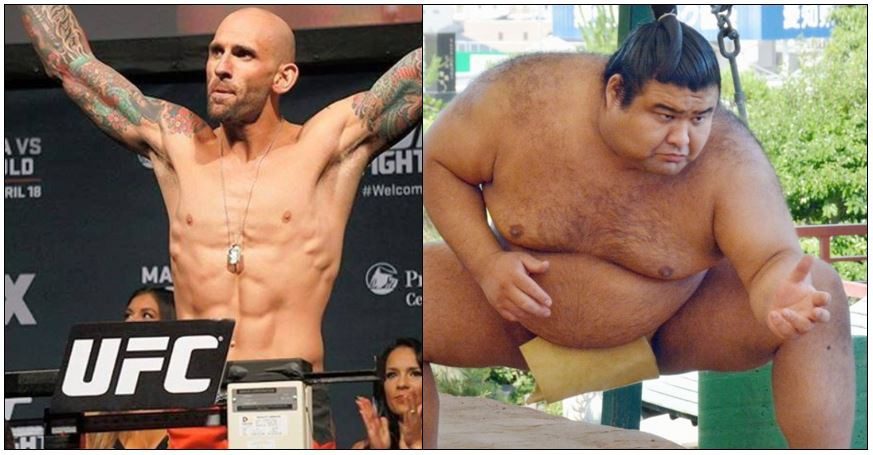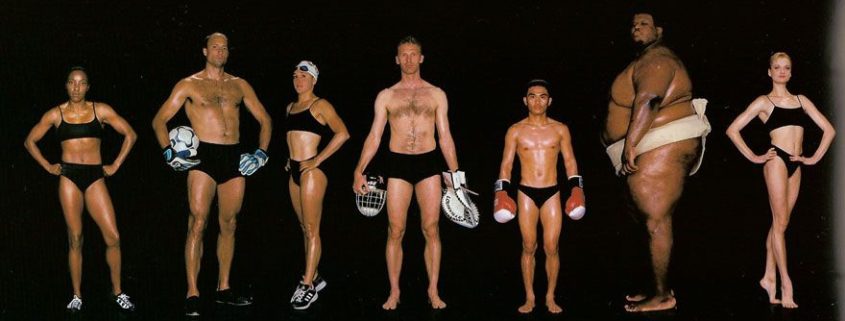When determining how to hire the best leaders, let’s take a step back and start with a more basic question:
What does it mean to be “fit”?
If I had to guess, I’d say you’re probably picturing someone lean, muscular, and athletic. Someone who is likely to excel at any sport they attempt. But what if that sport was sumo wrestling?

The ideal sumo wrestler looks nothing like the Western ideal of “fit.” They strive to be as large as possible, and in doing so, are idolized as sporting gods.
The term “fitness” will always be relative to a given scenario. This is especially true when determining how to hire the best leaders. No matter how strong a leader appears to be on paper, do their skills and style suit the requirements of that role?
Are they “fit”?
A Bad Leader? Or a Bad Fit?
We often works with organizations in developing their leadership and project capabilities. In doing so, we have learned that different tasks, environments, and strategies play a big role in determining how to hire the best leaders. By taking these all into account, you can determine which leadership style will be the best fit.
Fitness based on leadership style is a crucial point that is largely overlooked in the hiring process. When figuring out how to hire the best leaders, interviewers tend to focus on the “Previous Experience” section of a candidate’s resume when that has the least relevance in relation to your company’s needs.
Another common reason for choosing a candidate is because they are “really intelligent.” But having an IQ of 170 doesn’t automatically make one qualified to lead. In fact, there have been many studies on the correlation between IQ (intelligence quotient) and EQ (emotional quotient). While the results varied in their specifics, the general conclusion is that most people tend to be strong in one or the other, but not both. Therefore, a candidate with a high level of traditional intelligence may actually be at a disadvantage for emotional intelligence, making it more difficult for them to communicate, cooperate and, in short, lead.
Leading The Blind
When determining how to hire the best leader for your company, ask yourself:
- Do you have a thorough understanding of the organizational issues this leader will need to address?
- Can you communicate the expectations for this role in its entirety?
- Do you know how do the position’s goals play into the company’s larger plan?
- If you are hiring a replacement, have you considered exploring a new style of leadership in this role?
If you’ve answered “no” to any of these questions, don’t put up that Help Wanted sign just yet.
Many organizations try to hire for leadership without first knowing where they want to be led. All too often those choices are put off “until we find the right candidate.” This attitude makes the hiring process like trying to hit a bullseye blindfolded. You can keep throwing darts, but without knowing what to aim at, you’ll be lucky to hit anything at all.
The future of your company is not a game of darts, and neither are your employee’s careers. It is unfair to fire a leader who has been hamstrung by limited resources and nebulous expectations, and yet this is exactly what will happen. Eventually, you will have to let them go because they “aren’t a good fit”–a fact you would have known if you’d determined what a good fit was in the first place.
How to Hire The Best Leaders
To avoid any questions about how to hire the best leaders for the open position, make sure you do the following prep work.
Understand The Problem and the Need
When determining how to hire the best leaders, you must first figure out where the company wants to be led to (or away from).
- What is the issue you are trying to solve?
- Is this a people, processes, product, or profile problem?
- What are the expectations of the leader in terms of time, cost, and quality outputs?
Know Your Desired Outcomes
Based on what you know about the position, what strengths and styles are needed most?
- Someone who focuses on the details? Or someone who keeps the larger goal in sight?
- Someone who has a high level of technical, governance, and/or risk experience?
- Someone who will gel with other members of the team?
- Someone who is not afraid to challenge the way you do things? Or someone who will operate in a similar way to the person in the role previously?
Finally, of the traits mentioned above, which one is most important?
Same Conditions = Same Results
The definition of insanity is doing the same thing over and over and expecting different results.
-Albert Einstein
If the reason you looking into how to hire the best leaders is that your last one was unsuccessful, think twice before hiring someone with a similar style–especially if that style involved not rocking the boat. If there’s a potential problem within senior management (such as limited resources or lack of direction), hiring a candidate that will push back could be an asset.
Hiring Is Only The Beginning
Just because you’ve figured out how to hire the best leader doesn’t mean your work is done. Evaluating the company’s strategy and goals in relation to your new hire must continue even after they come on board.
Commit to Continuing Education
Even the best leaders have room for improvement. But if you’ve hired someone fit for purpose, then you should be able to develop them appropriately, especially in areas where the team needs them to be stronger.
New Software Won’t Fix Bad Management
Many organizations mistake a personnel issue for a technical problem. What looks like a failure with one of your systems may in fact be a communication issue between sub-organizations or individuals. Companies can spend millions of dollars trying to implement software solutions whilst avoiding the actual people-based problem.
In Conclusion
There’s a saying in the military: “Time spent in reconnaissance is seldom wasted.” The same mentality can be applied when figuring out how to hire the best leaders for your company. By taking a methodical approach to identifying what the problem is and finding the most appropriate solution, you will be more assured of finding the right leader for you. Otherwise, you may end up with a slalom skier when what you need is a sumo wrestler.
When it comes to hiring leaders, it may be beneficial for you to experience what good leadership looks like firsthand. The Eighth Mile Consulting offers an 8-week self-paced online leadership course perfect for those looking to improve their skills through honest self-evaluation and disciplined dedication. To understand what “good” leadership really looks like, visit our course page or contact us for more information.



 The Eighth Mile Consulting
The Eighth Mile Consulting  The Eighth Mile Consulting
The Eighth Mile Consulting 
 The Eighth Mile Consulting
The Eighth Mile Consulting  The Eighth Mile Consulting
The Eighth Mile Consulting 
What a great article! Thanks for sharing your insights, David. I couldn’t agree more. Leadership comes in many different forms and environments, so naturally, we need to adapt to place the right leaders in the right role. I’d be interested to know more about your services. Do you provide leadership training?
Hi Damien, Thank you for your feedback. In answer to your question, yes, we offer both customised coaching sessions as well as leadership courses. Happy to provide more information about these via email. Would you like us to send some further details through?